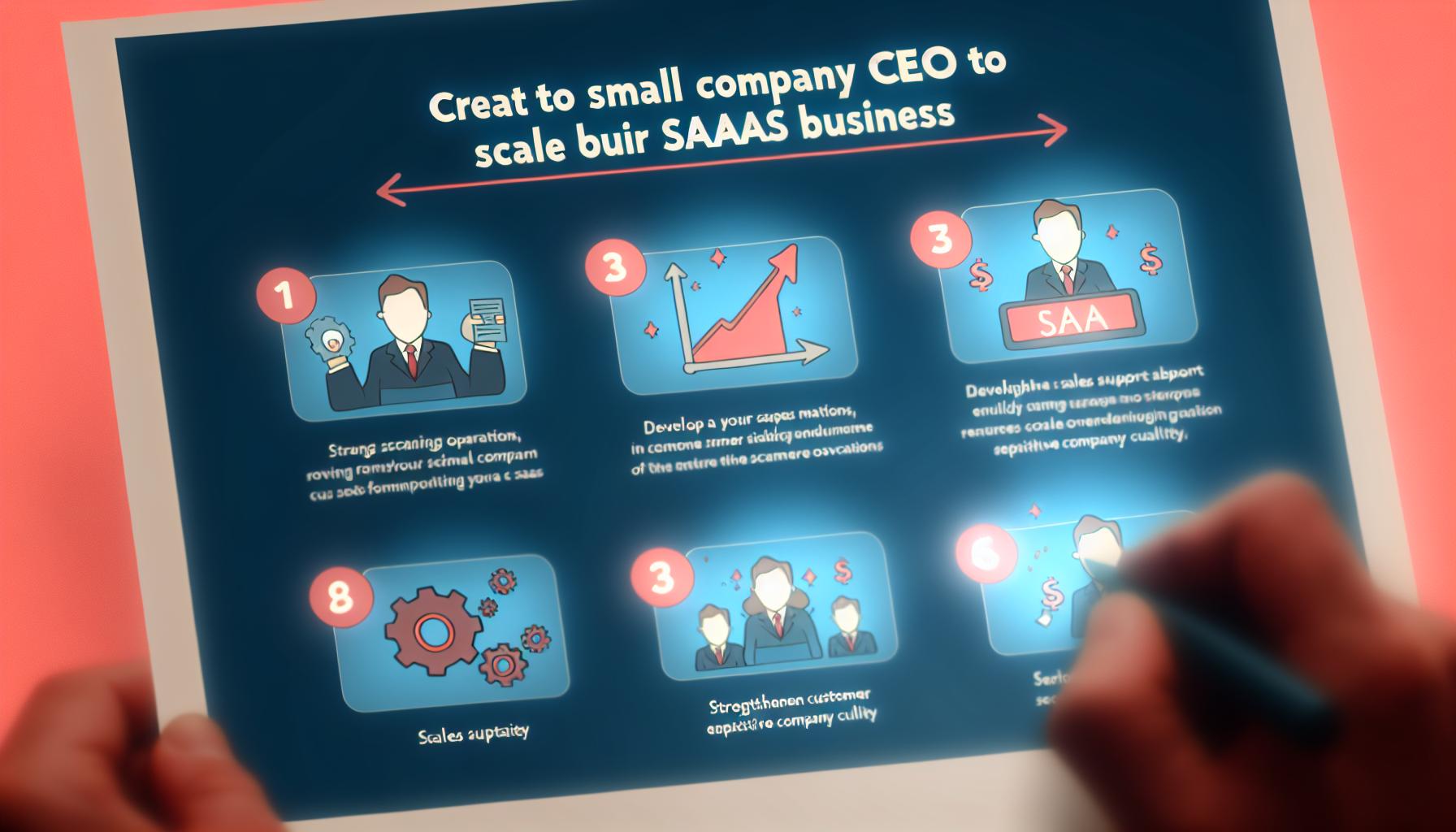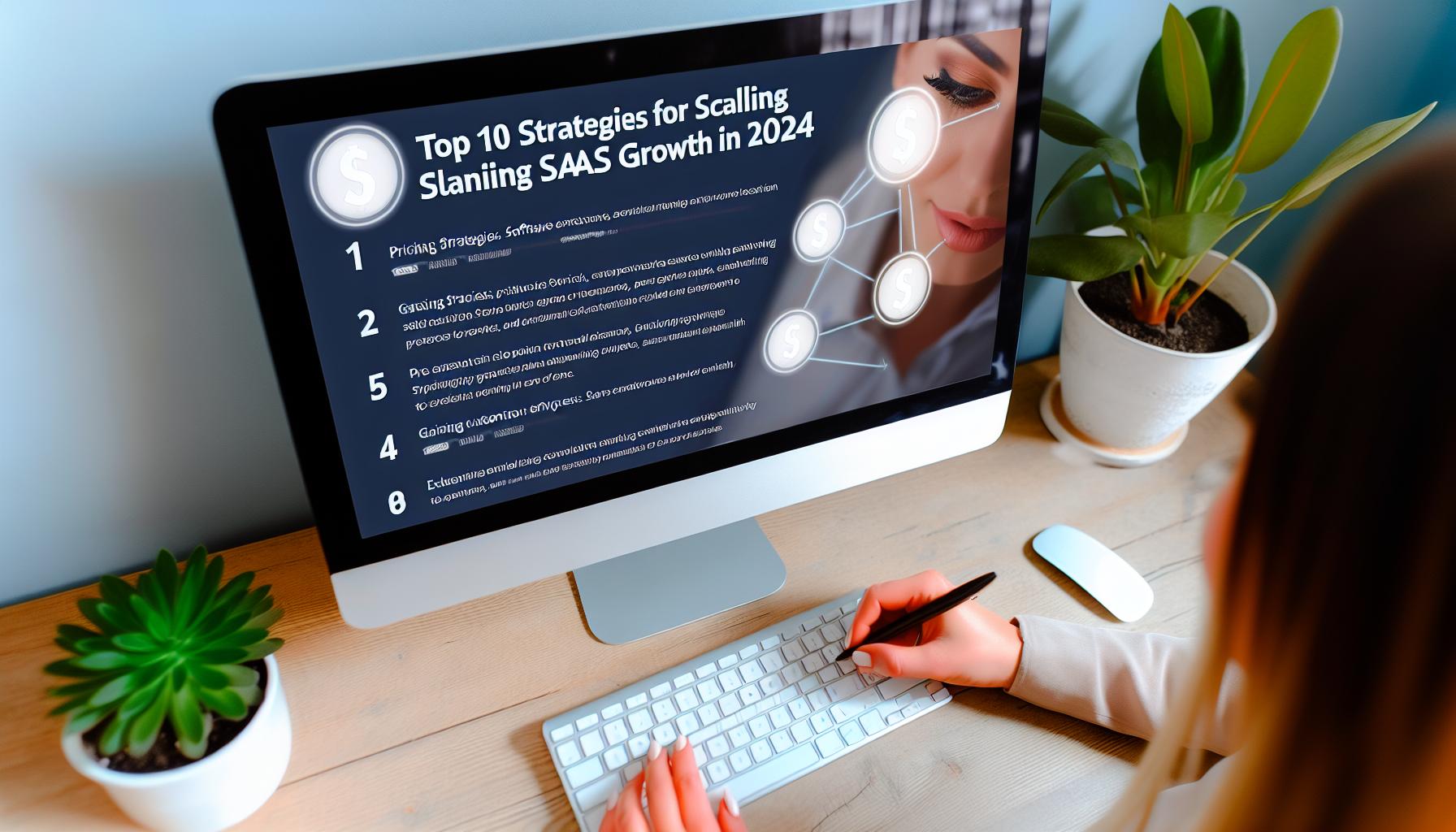2 min read
Scaling Your SaaS Business: A Step-by-Step Guide for Small Company CEOs
In the fast-paced world of Software as a Service (SaaS), growth is not just a goal—it's an imperative. Yet, scaling your business presents a unique...
2 min read
Brian Polackoff
:
Jan 29, 2024 10:27:00 AM

Launching a Software as a Service (SaaS) startup in today’s saturated market requires more than just a great product—it demands a strategic approach to reach and resonate with your target audience effectively. A well-defined go-to-market (GTM) strategy is crucial for positioning your startup for success right from the outset. This strategy outlines how you intend to reach your target customers and achieve competitive advantage with your unique value proposition. Here’s how you can develop a winning GTM strategy for your SaaS startup.
Start by conducting thorough market research to understand the needs, pain points, and behaviors of your potential customers. Create buyer personas to represent your ideal customers—this will help you tailor your messaging and product development to meet their specific needs.
Identify different segments within your broader market based on criteria like industry, company size, or user role. This segmentation will allow for more targeted and effective marketing strategies.
Your value proposition should clearly articulate how your product solves a specific problem or addresses a need that is not currently met by existing solutions. It should be concise, compelling, and easily understood by your target audience.
Highlight what makes your SaaS solution unique. Focus on features or benefits that set you apart from the competition, whether it’s your pricing model, user experience, or innovative technology.
Decide whether you’ll sell directly to customers through your website or use indirect channels like resellers or marketplaces. Direct sales give you more control over the customer experience, while indirect channels can expand your reach.
Digital channels are essential for SaaS startups. Utilize content marketing, search engine optimization (SEO), pay-per-click (PPC) advertising, and social media to attract and engage potential customers.
Forming partnerships with companies that offer complementary services can provide valuable distribution opportunities and access to new customer bases.
Generate excitement about your product before the launch. Use email marketing, social media, and PR to tease features and benefits, and consider offering early access to create buzz.
Use your launch as an opportunity to collect feedback from early users. This feedback can be invaluable for making quick improvements and addressing any issues that could hinder broader adoption.
A successful launch is just the beginning. Continuously analyze performance data, user feedback, and market trends to refine your product and GTM strategy. Be prepared to pivot or make adjustments as needed to meet the evolving needs of your market.
Define clear metrics and KPIs to measure the success of your GTM strategy. Common metrics for SaaS startups include customer acquisition cost (CAC), lifetime value (LTV), churn rate, and monthly recurring revenue (MRR).
Developing a winning go-to-market strategy for your SaaS startup involves a deep understanding of your target market, a compelling value proposition, strategic choice of distribution channels, and meticulous execution of your launch plan. By focusing on these key elements, you can position your startup for success, driving growth and establishing a strong presence in the competitive SaaS landscape. Remember, the best GTM strategies are flexible and adaptable, evolving with your business and the market.

2 min read
In the fast-paced world of Software as a Service (SaaS), growth is not just a goal—it's an imperative. Yet, scaling your business presents a unique...

2 min read
In the dynamic world of Software as a Service (SaaS), growth is not just a goal—it's a necessity. For SaaS companies looking to expand their...

In the fast-paced world of SaaS, businesses are constantly striving to scale their operations and drive growth. With the rise of software as a...